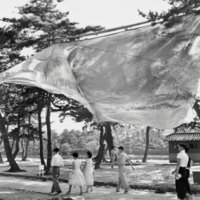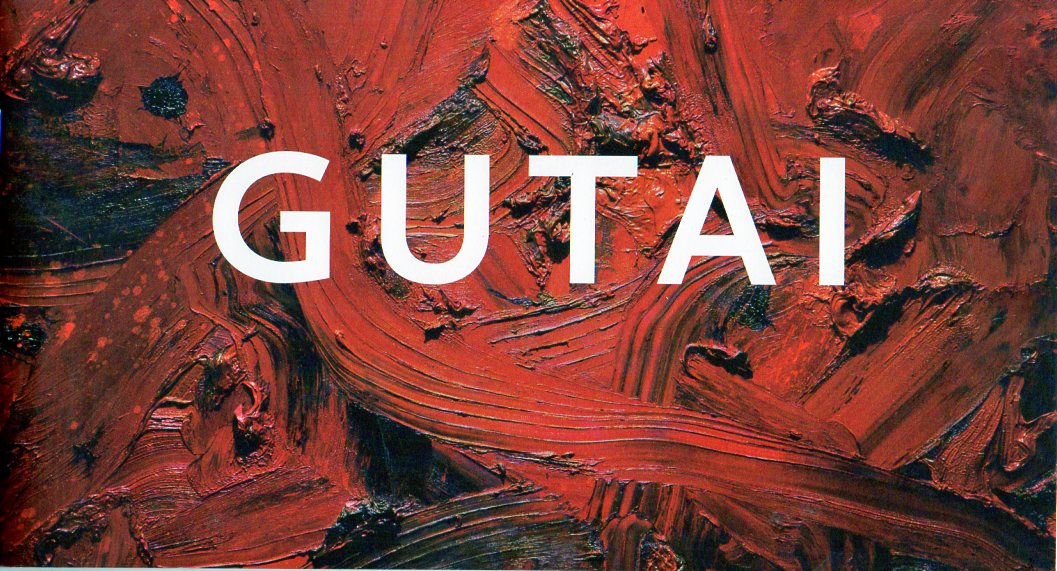
Japanese Modernism Across Media
Outdoor Exhibition practices
"Reaching out to engage wide audiences, including children, these exhibitions provided a stark contrast to the oppressiveness of wartime culture and encouraged visitors to think, play, and create for themselves." -- Guggenheim Museum
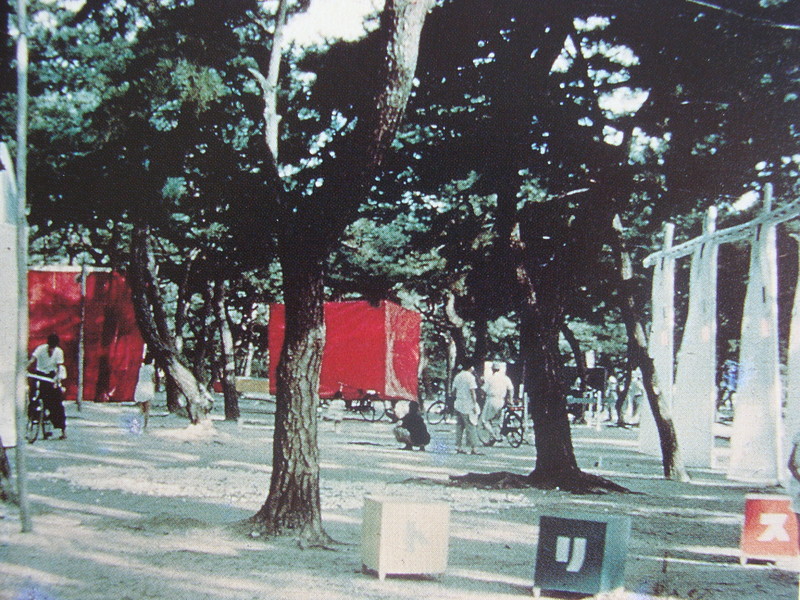
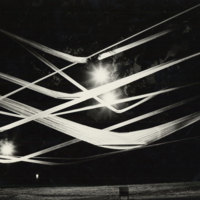
Visitors were able to touch this installation, and because of the 24 hour access to this site were able to see the way the installation changed depending on the time of day, the weather, and other natural elements.

This installation encouraged visitors to walk with the long paper trail of footprints, which would eventually wind up a tree encouraging the visitor to imagine themselves walking up the tree.
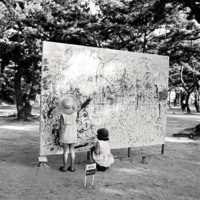
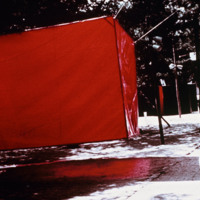
People are encouraged to physically enter the cube, and with the assistance of lights on corners of this work become fully emmerssed in the bright red color that, as Ming Tiampo describes, was a vivid contrast to the destruction left behind from World War II
The Gutai Group’s first exhibition took place outdoors a year after their participation in “The Experimental Outdoor Modern Art Exhibition to Challenge the Burning Midsummer Sun”. This initial event was commissioned by the Ashiya City Art Association, and took place in June of 1954. The event was a success, leading to the Gutai Group’s own event in the summer of 1955.
Over the span of thirteen days, the Gutai Group held their first exhibition in a public pine forest in Ashiya. During this event, artists created many pieces that encouraged visitors to interact with and experience the art at a more personalized level than what can be found in museums. Viewers were able to engage with the work directly not only with their sight, but also with touch and the ability to transform pieces. In addition to how a person normally is able to experience a piece of art in the museum setting (that is, with their eyes and personal opinions), the experience with the pieces on display at the outdoor exhibits would change depending on the time of day, the weather, how long it had been on display, and also by how the community altered the pieces. This exhibit, perhaps because of it’s interactivity, did not receive critical appeal from the Japanese art community.
Despite the lack of critical appeal, the Gutai Group continued throughout its time to have interactive pieces in their exhibits. The works made great strides in attempting to go beyond the restrictive nature that traditional art exhibition settings imposed. Though the museum effect is lost, a "playground effect" emerges.
